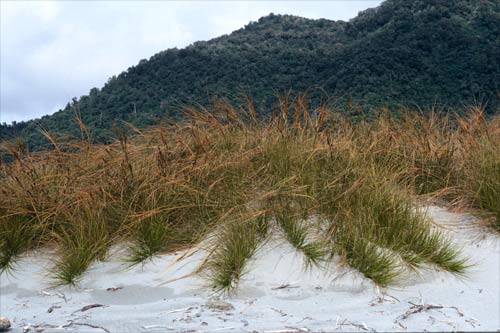
The native sand-binding sedge pīngao is one of three plants that grow on the seaward face of sand dunes. Its long stems bear tufts of bright orange leaves, which were dried and used by Māori for weaving. Retaining their vivid colour, the leaves were used in tukutuku – decorative panels in meeting houses – and in kete (woven baskets), which this proverb refers to:
Kohokohi kohikohi pīngao e
Mo ngā kete raukura o te rangi e
Gather up pīngao
For the treasured baskets of the sky.
The legend of Tāne’s eyebrows (Ngā tukemata o Tāne) tells of the origins of pīngao:
There was hostility between Tāne, god of the forest, and his brother Tangaroa, god of the sea. In a gesture of friendship, Tāne plucked off his eyebrows and offered them to Tangaroa. Tangaroa rejected this gift and threw them to the shore. There they sprouted and grow today as pīngao, symbolising the boundary between the realms of Tāne and Tangaroa.
Te whakamahi i tēnei tūemi
Department of Conservation
Reference:
10048310
Photograph by Don Neale
This item has been provided for private study purposes (such as school projects, family and local history research) and any published reproduction (print or electronic) may infringe copyright law. It is the responsibility of the user of any material to obtain clearance from the copyright holder.









Tāpiritia te tākupu hou